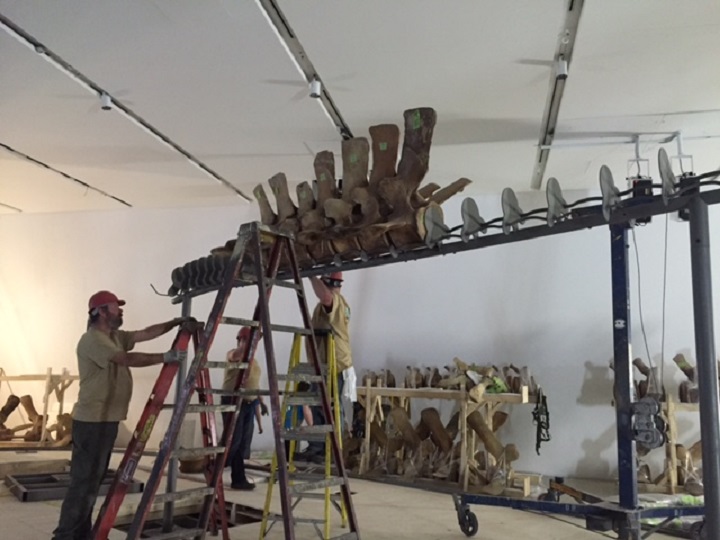The largest mammal to ever live on earth will soon be on display at the Royal Ontario Museum.

The skeleton of a blue whale is being assembled at the museum on Wednesday and will be ready for public viewing starting March 11.
The blue whale being displayed was one of nine blue whales found dead in Newfoundland in March 2014.
READ MORE: Preparing Newfoundland’s dead blue whales for a big move
“People found nine blue whales dead in the icepack,” said Burton Lim, Assistant Curator of Mammalogy at the ROM.
“Two of them ended up washing on shore on the west coast of Newfoundland and we went there in the beginning of May 2014 to salvage them.”
Mark Engstrom, Deputy Director for Collections and Research at the ROM, said upon hearing the news of whales, he contacted the Department of Fisheries and Oceans to negotiate a deal to recover the skeletons.
“This is the largest animal that has ever lived. The blue whale, in terms of weight, is bigger than any dinosaur that ever lived on the planet,” Engstrom said.
“The population of blue whales in the western Atlantic is between 200 and 400 animals. Having nine of them die is three to four per cent of the entire population … My first reaction was that it was a horrible event, but we were hoping to make something good come out of it.”
The ROM spent over a year prepping and preserving the whale in what Engstrom describes as a “messy and smelly process.”
“The main part of the work was removing everything that wasn’t bone,” he said.
“You take off the skin and the blubber with flensing knives, like sailors would have done ages ago… we were in the middle of this dead whale for seven days taking it apart and getting the bones onto a truck.”
Lim said the bones were buried in manure compost for a year and half.
“The skull and flippers and tail had a lot of skin, meat and connective tissue, so the compost was for that,” Lim said.
“After the compost … we had to de-grease the oil that was still left in the bones.”
The skeleton arrived at the ROM on Tuesday covered by multiple layers of bubble wrap and Research Casting International, an Ontario company specializing in molding and casting fossilized bones, has begun assembling the 24-metre-long whale.
“These were a living creature two years ago. The bone is very porous, so we have to be very careful because it could be fragile,” said Brett Crawford, Head of Mounting with Research Casting International.
“It’s such an iconic animal for this museum and there is very little known about these incredible animals. It’s a big profile job for us and for the ROM, and science as well.”
The assembly will take approximately two days and the exhibit, Out of the Depths: The Blue Whale Story, will be open to the public starting March 11.




Comments